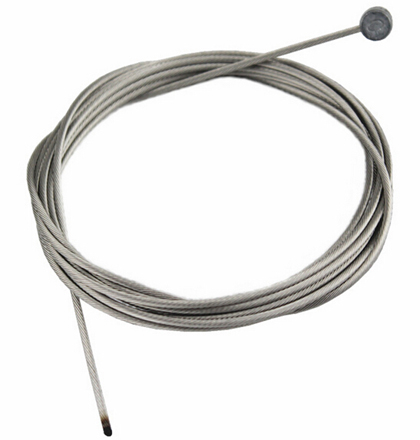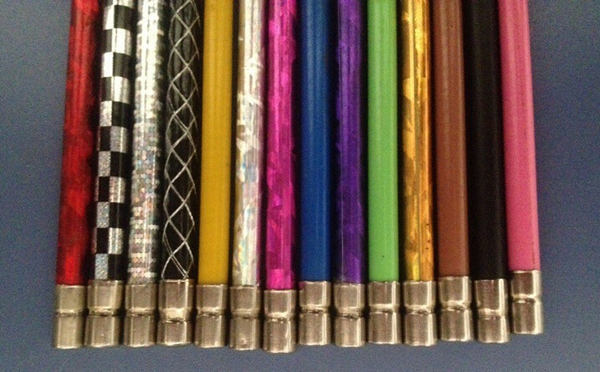Fault Analysis and Maintenance of SM6000 Air Compressor Du Zhongxin Yinfa Liang (Laiwu Iron and Steel Group Heavy Plate Plant, Shandong 271104) After the improvement, the SM6000 air compressor runs smoothly and the fault is significantly reduced, ensuring smooth production. South Korea's Samsung SM6000 air compressor imported by Shandong Laiwu Iron and Steel Group Co., Ltd. is mainly responsible for supplying compressed air for equipment for wide and thick plate production line. Its working parameters are: flow rate (13000~24 000) m3/h, exhaust pressure (3.5 X105~25.0xlO5)Pa. This type of air compressor has the characteristics of high design efficiency, wide application range, low operating cost, convenient maintenance and high automation. However, due to problems in installation and commissioning, professional operation, etc., the equipment has experienced problems such as surge and low exhaust pressure during use. This paper mainly analyzes the causes of the surge and low exhaust pressure of the SM6000 air compressor, and proposes a solution. 1 Composition and Compression Principle 1.1 The centrifugal compressor is a center-type air compressor. The large gear is driven by a main drive unit and driven by two small gears. After the outer impeller is sucked and compressed by the impeller assembled on the pinion, the high-speed airflow through the impeller restores the positive pressure on the diffuser and the reel. Bearings for axial and radial loads are mounted on the shaft of the large/small gear. At the same time, a carbon ring seal is installed to achieve complete oil-free air. An intercooler is placed between each compression section to cool the high temperature air, and in the most engineered, the main research direction is mechanical design. Yin Faliang (1982*), male, graduated from Qingdao Technological University, assistant engineer, the main research direction is mechanical design. The rear of the last three stages is provided with a cooler to cool the temperature of the discharged air, and finally the measuring pipe is provided with a measuring valve for preventing backflow of the system air. At the same time, in order to restrict the expansion and contraction of the pipe, an expansion joint is provided; a silencer is provided in consideration of the blow noise of the compressor. 1.2 Compression principle Centrifugal compressor converts speed energy into pressure energy. The high-speed rotating impeller draws gas axially, and the gas is radially accelerated through the passage. When the end of the impeller is reached, energy is transferred to the gas, and the gas is decelerated as it passes through the diffuser and the regularly increasing radial section volute. Following the conservation of energy, the velocity of the gas can be converted to pressure energy through a well-designed deceleration process, and the gas is then cooled. This process is repeated again at the next level of compression. Basically, each stage of compression can be developed at a ratio of 2.5:1, and the final outlet pressure is achieved by multi-stage compression of the machine. There are 4 levels of compression on some TurboMaster centrifugal compressors. 2 Main components 2.1 Gear (American Gear Manufacturing Association) standard manufacturing, the accuracy of the pinion is AGMA13, and the accuracy of the large gear is 12. The axial positioning control of the pinion is completed by the high-efficiency thrust disk above it, and the thrust disk is precisely positioned on the side of the large gear; the axial positioning of the large gear is completely completed by the thrust bearing. Large and small gears have high performance and sufficient strength and long life. The rotational speed of the large gear is the rotational speed of the motor, and the rotational speed of the small gear is determined by the gear ratio of the large/small gear. The center distance of the gear is controlled by a radial bearing that fits over the end of the pinion shaft. 2.2 Bearings Centrifugal compressors are equipped with tilting pad bearings on the pinion shaft. This type of bearing maintains efficient and stable operation at high speeds and limits oil film oscillation. The large gear is positioned by a four-tapered thrust/radial bearing that provides reliable, stable operation and efficient thrust transfer. 2.3 Impeller and diffuser The electric motor of the main motor drives the large gear to rotate, and the large gear drives the pinion. The high-speed rotation of the pinion drives the impeller to suck in the gas into the passage. The gas is accelerated by the impeller in the process of reaching the tip of the impeller through the passage, transferring energy to the gas, and the gas is discharged from the impeller, passing through the diffuser to the volute, the speed is lowered, and the static pressure is increased. . 2.4 Intercooler and aftercooler Intercooler and aftercooler are placed at the rear of each stage of the compressor to reduce the temperature of the compressed rising air, reduce the specific volume, and increase the compression efficiency in the next stage. . When the high-temperature compressed air passes through the finned tube bundle cooled by the low-temperature cooling water, heat exchange between the air and the water can be effectively performed. The result of the cooling process is that condensed water is precipitated from the cooling air and is discharged from the cooler through the condensing water removal system. This type of cooler is a safe, easy to remove and clean structure with low maintenance costs. 3 common fault analysis and solution 3.1 The root cause of surge surge is that the intake air volume is reduced and reaches the minimum allowable for the compressor. The outlet air is not discharged and the outlet pressure is increased, causing the impeller to rotate and detach, thus inducing the compressor. Surge. According to the characteristics of the fault, the following measures are mainly used to effectively solve the problem of air compressor surge. (1) Add a vent control valve and an inlet regulator valve to the air compressor. When the motor current changes greatly in a certain period of time, the venting regulating valve and the inlet regulating valve are simultaneously opened, which can effectively eliminate the surge. When the surge disappears, the vent valve is closed, and the inlet regulator adjusts the opening according to the pressure value set by the system, so that the system automatically returns to the set pressure. (2) Increase the diameter of the outlet pipe. The model of the self-contained outlet pipe is DN400mm, and its cross-sectional area is 0.13m2. The diameter of the pipe network is small, the gas cannot be effectively eliminated, and the outlet pressure is increased, resulting in surge. On the basis of meeting the technical requirements of the equipment, the model of the outlet pipeline is changed from DN400mm to DN600mm, and the cross-sectional area is increased from 0.13m2 to 0.28m2. Under the condition of constant gas flow, the resistance of the gas flowing through the pipeline is reduced to The original 1/32, this can greatly reduce the exhaust resistance, improve the working state of the compressor, and make it safe and stable. (3) Turbo compressors are the most demanding air intake management requirements among all compressors. This is because the intake air amount is large, but the compression portion is relatively small, and due to the high-speed rotation of the impeller, a large amount of foreign matter is accumulated per unit area. Foreign matter can cause surge of equipment after being deposited on the impeller, diffuser, and air cooler for a long time. Therefore, it is necessary to periodically clean the dust in the turbo compressor to prevent the occurrence of surge. 3.2 Carbon deposits will form a layer of oil film on the inner surface of the air compressor cylinder. The molecules of other lubricants will be suspended in the cylinder piston end face, valve, wind pack and separator, under the action of hot air. Oxidation forms carbides, which gradually become carbon deposits. Carbon deposits can seriously affect the service life of equipment, and there are safety hazards such as equipment explosion. Use the following measures to prevent carbon deposits from occurring: (1) Ensure cooling. Carefully check the amount of water, water quality, and water temperature of the cooling water to maximize the cooling effect. (2) A large amount of dust, coal dust and other impurities in the air of the plant enter the cylinder part through the metal mesh with the air. When the lubricating oil is decomposed and the impurities stick to the inner wall of the cylinder, carbon deposit is formed. Therefore, it is necessary to clean the air filter frequently, and regularly clean up the carbon deposit, while ensuring the quality and dosage of the lubricating oil to prevent carbon deposition. 3.3 The temperature of the fuel tank is too low. The oil in the fuel tank of the air compressor sometimes has the problem that the heating temperature cannot be heated or the heating temperature rises slowly. This problem may be caused by the failure of the oil heater to supply power or the oil heater to break. It should be confirmed whether the power supply is input normally, and the impedance of each segment is checked in time (the impedance between the phases is 500 ~ 700), and the problem should be replaced in time. 3.4 Insufficient exhaust volume The lack of air compression and exhaust gas is mainly due to the blockage of the air filter chamber, insufficient speed (the grid frequency and voltage are insufficient to cause insufficient speed), the vent valve, the seal leak, the cooling water cooling can not achieve the effect, etc. . In order to prevent the air compressor from being exhausted, it is necessary to regularly check the key parts of the equipment, clean the scale and debris in the pipe, reduce the cooling water temperature, and improve the water quality. 4 Conclusion In combination with the actual problems that occurred during the production process, the common faults of the SM6000 air compressor were summarized, the causes of the failure were analyzed, and a solution was proposed. After the equipment is rebuilt, after a long period of production operation, the failure rate is significantly reduced, ensuring smooth production.
IKIA Bike Brake Cable
The IKIA
Bicycle Brake Cable have good quality. It have good weldability , abrasion resistance. It can be used on mountain bikes , Kid bikes , Racing bikes , City bikes . We are very welcom OEM and ODM to production . We will supply the perfect service for pre-sales and after sale.
Service:
1.
Small MOQ , Usually sample is available.
Bike Brake Cable Bike Brake Cable,2P Brake Cable,Bike Laser Brake Cable,Color Brake Cable Hebei YIJIASHUN Trading Co.,Ltd , https://www.ikiabicycle.com
Key Specifications

2. Support OEM & ODM: We can print logo or customs package according
to our client`s requirement.
3. Top quality : We have professional team to control the quality.
4. We work with DHL, UPS, FedEx, TNT and EMS for small order. For
large order we can arrange shipment by air or by sea.
5. Satisfactory service : We treat clients as friends and 24 hours customer
service.